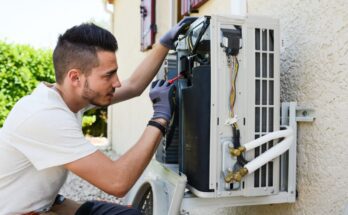While the thought of a nuclear fallout might seem daunting, being prepared for such an event can significantly reduce your anxiety and enhance your ability to adapt to the situation. Growing your own food after a nuclear fallout is about survival and regaining a sense of control and normalcy in the face of uncertainty.
With the right knowledge and resources, you can create a thriving environment that becomes a lifeline for you and your community. These tips will equip you with the strategies and confidence needed to navigate the challenges of growing food in a world affected by disaster.
Understanding Soil Contamination and Remediation
One of the main steps in growing your food post-fallout is understanding soil contamination and its implications for agriculture. Nuclear fallout can leave harmful levels of radiation and toxins in the soil. To remediate contaminated soil, begin by testing its radiation and chemical levels. Based on the results, you might need to import clean soil, create raised beds with uncontaminated materials, or use phytoremediation, which employs plants that absorb contaminants to clean the soil.
Selecting Suitable Crops for Your Garden
Choosing the right crop varieties is vital when growing food in compromised environments. Focus on planting crops known for their resilience and nutritional value. Root vegetables like carrots and potatoes, leafy greens like kale and spinach, and fast-growing grains like amaranth and quinoa are excellent options. Prioritizing crops that require fewer resources and are less susceptible to environmental stress will maximize your chances of successful harvests.
Gather Heirloom Seeds
Heirloom seeds offer a genetic diversity that’s crucial for adapting to new environmental conditions and threats. A reliable guide to heirloom seed-saving techniques will equip you with the skills to preserve food security over time. Start by selecting robust plants with desirable traits that will allow them to complete their life cycle and produce seeds. By saving and using heirloom seeds, you can cultivate crops that are resilient to local conditions while ensuring sustainability for future planting seasons.
Building a Secure Greenhouse Structure
Protecting your crops amid residual radiation and fluctuating weather conditions is paramount in a post-fallout environment. A greenhouse can shield your plants while facilitating a controlled growing environment. Use materials that can block harmful radiation, such as lead-lined covers or specialized greenhouse plastics. Ensure your structure has good ventilation to prevent heat buildup and allow natural and artificial light to penetrate the growing space.
Water Sourcing and Purification Techniques
Access to clean water is as critical as soil health. Post-fallout water sources are likely contaminated and require purification before use in crop irrigation. Rainwater harvesting is viable, but purification is necessary to remove radioactive particles. Employ methods such as distillation, reverse osmosis, or activated carbon filters to ensure water safety. Maintaining a reliable source of clean water is essential to fostering healthy plant growth and ensuring food safety.
Growing your own food after a nuclear fallout is an essential skill for survival. From understanding soil contamination to mastering heirloom seed preservation, these techniques will empower you to create a sustainable food supply.



